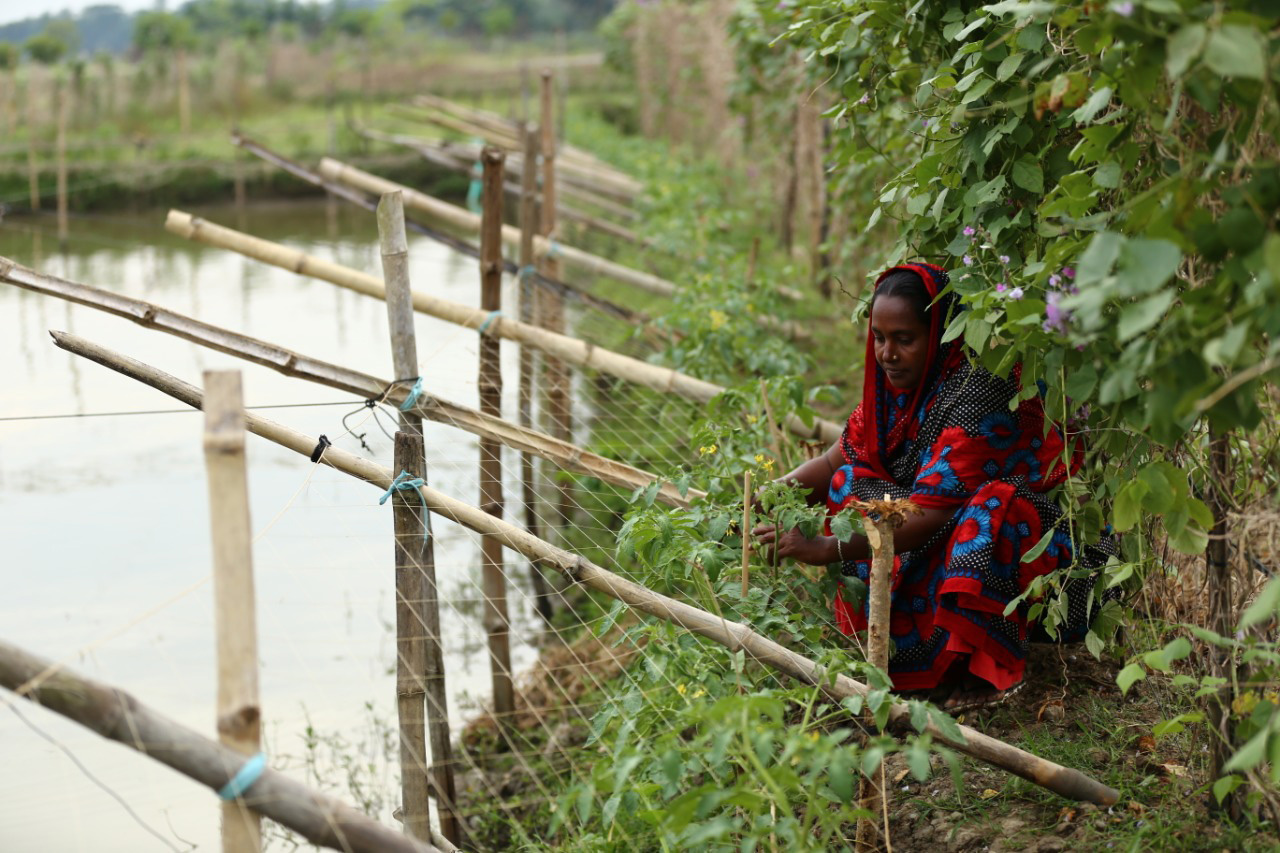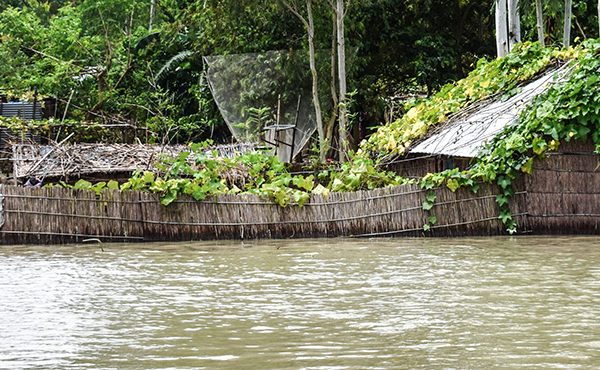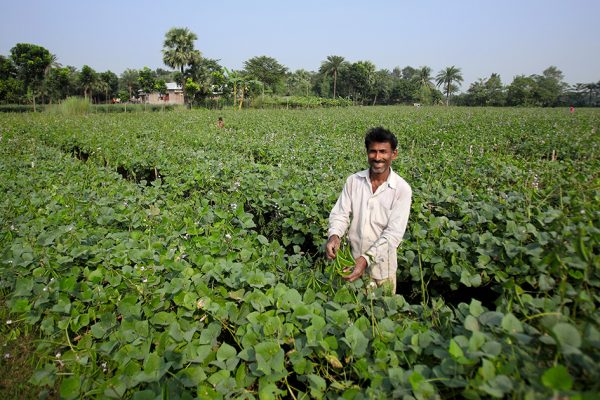Climate resiliency through the lens of ultra-poverty: Six interventions from BRAC
Reading Time: 3 minutes
Bangladesh ranks seventh in the global top ten most affected countries in the climate risk index 2021 report. Approximately 13.3 million Bangladeshis are estimated to be displaced by 2050 due to climate change impacts. To combat challenges of climate-induced disasters, learning from the past can be instrumental in reducing risks and better support people living in ultra-poverty.
Rani Begum was 15 when she was married off to Raju Shikder. They lived in a two-storied wooden house close to a riverbank in Gopalganj district. One day, the water level of the river adjacent to their house started to rise and submerged the entire village.
The situation deteriorated at night, when one by one, the trees, cattles and houses – including Rani’s – crumbled into the river. Rani and her family moved to the nearest shelter empty-handed, and survived on rice starch and leafy vegetables for the next two months. Anticipating a better life with two proper meals a day, her family decided to move to Khulna.
In Bangladesh, natural disasters in riverine and coastal areas are more frequent as a result of climate change, fueling inequality, poverty, food insecurity and migration. BRAC Ultra-Poor Graduation (UPG) programme has been carrying out multi-dimensional interventions with a climate adaptive lens to achieve their goal of reducing ultra-poverty in Bangladesh.
In 2012, the programme introduced the ‘Addressing Climate Change-related Destitution (ACCD) Strategy’ to empower people living in ultra-poverty and severe climate vulnerability in the southern coastal areas of Bangladesh, with climate resilient livelihood interventions. Here are six key learnings of why it works from the climate-adaptive interventions of UPG:
1. Data-driven targeting
For selecting the working areas, the programme looks at both the poverty map and climate vulnerability index developed by the Government of Bangladesh. This targets participants with the highest needs in terms of economic and culminate-induced vulnerabilities, such as people living in ultra-poverty near the riverbanks. This is significant in a country like Bangladesh, which has over 230 major rivers and their tributaries.

2. Contextualised enterprise selection
The Ultra-Poor Graduation programme offers enterprise options to its participants considering area-specific vulnerabilities and feasibility. For example, duck rearing, boats and fishnets are recommended for haor (wetland) areas, as opposed to goat rearing for the northern dry areas. In 2012, the programme introduced a threefold enterprise production model in the southern region to tackle salinity intrusion. Participants received coaching to identify lands with supply of deeper sweet-water to cultivate rice and fish simultaneously, while also growing vegetables in the fertile soil in the banks of the sweet-water reservoirs.

3. Climate-adaptive housing infrastructure and fodder management
Participants of the southern regions are advised to customise cattle shelters with plinth raising and sloppy roof made of corrugated iron sheet, so that the storms cannot blow them away. Fodder management is also customised in different regions. For instance, napier grass is suggested for dry areas, watery grass for waterlogged areas and hydroponic grass for haor (wetland) areas. Under the ACCD strategy, 400 participants from the Ultra-Poor Graduation programme living in southern regions who are climate-vulnerable were also supported with disaster-resilient houses to ensure a safer shelter.
Read more: Learning from communities how to build resiliency
4. SWOT analysis and hands-on coaching
After asset transfer, the frontline staff conduct SWOT analysis to assess the strengths, weaknesses, opportunities and threats of the participants where natural disasters are identified as threats. Participants are then guided to develop contingency plans for alternative livelihood options to support themselves during disasters.
They also receive hands-on-coaching on other pre- and post-disaster management aspects, including causes of disaster, disaster-prone seasons, faster shock-management techniques and to-do’s during various disasters.
5. Savings for the rainy days
The programme’s participants are encouraged to save regularly to promote their savings behaviour, enhance financial security and plan for future investments. In disaster-prone areas, the staff groom participants on the necessity of savings to absorb shocks and manage disaster-induced risks.
Read more: Finance for flood-hit families: reducing risk and raising resilience
6. Village committees for reintegration
The programme forms Village Social Solidarity Committees (VSSCs) with participants and influential individuals from the community as representatives to reintegrate participants into the society. Among other agendas, the committees proactively mobilise resources during disasters by themselves and from government and non-government organisations to support the programme participants.
Read more: How all women village solidarity committees are helping women escape poverty
To combat the climate-induced impacts, using the learnings from the past is instrumental. The Ultra-Poor Graduation programme uses their past experiences from climate-adaptive approaches and embeds climate-resilient components in their interventions. Recently, it launched a project with BRAC Humanitarian Programme, funded by the Climate Bridge Fund, to strengthen the socio-economic and climate resilience of 600 people displaced by climate change who are living in ultra-poverty in Khulna and Rajshahi.
BRAC’s work in extreme poverty in Bangladesh is supported by the Foreign, Commonwealth and Development Office, under the Strategic Partnership Agreement.
Tania Tasnin is a Manager, Knowledge Management and Communication, at BRAC Ultra-Poor Graduation Programme, and Ahona Azad Choyti is a Communications Specialist at BRAC Communications.
Cover: Sumon Yusuf©BRAC





